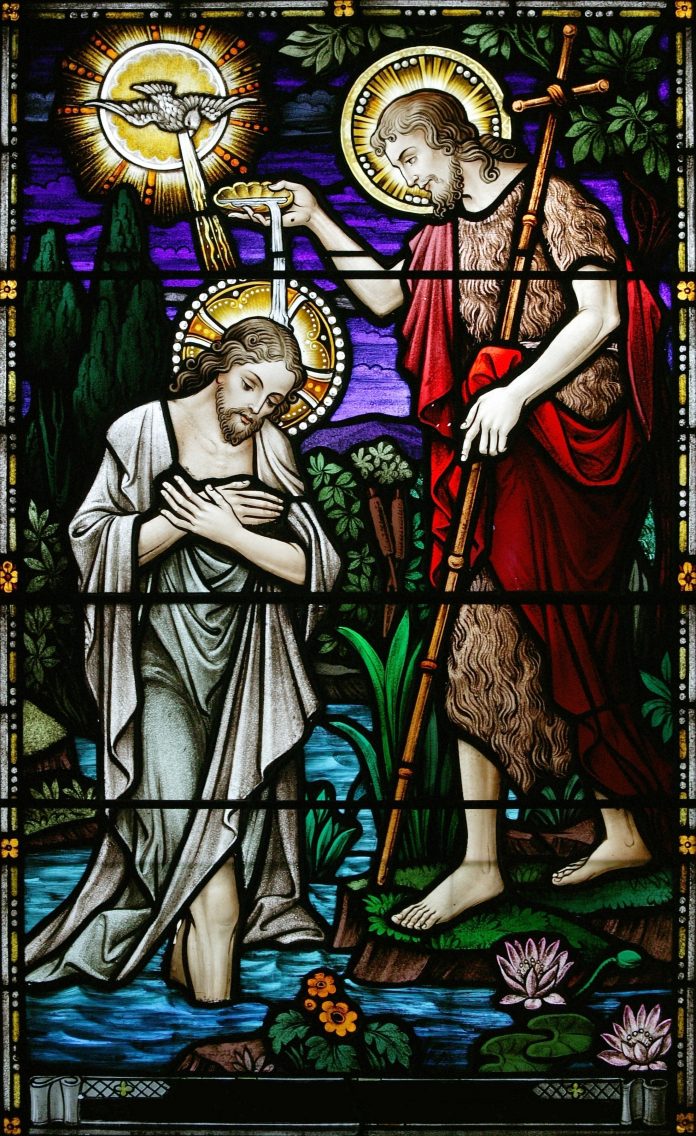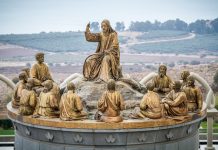
by Alice Pfeifer, CSA
This Complete-A-Project Bible Search Activity is for teacher and students (grades 4-6) working together. The exercise can be completed using the Bible to find the answers to fill in the blanks on the activity sheet [CLICK HERE]. Bible Searches for this learning year focus on Gospels from the current liturgical year and feature real-life scenarios in which the names and other details have been slightly modified. This Gospel (Luke 24:13-35) is from the Third Sunday of Easter.
Background
* The two disciples of today’s Gospel are returning home quite simply because they have lost faith in Jesus. They still consider him a great prophet “mighty in deed and word,” but his crucifixion has ended their dream of his being “the one to redeem Israel.” They probably had been hoping for some sort of restoration to Israel’s former glory—a return to the kind of life the Jews had enjoyed during the rule of King David.
* The two had belonged to a group of disciples that often accompanied Jesus. They were not Apostles. While in Jerusalem, they probably were present when a few women reported finding the tomb empty and being told that Jesus was alive. At that time, however, men thought that women could not offer reliable witness. That was why the testimony of women was not accepted as legal evidence at a criminal trial. When a few men went to the tomb to verify the women’s story, they indeed found it empty “but him they did not see.” As far as these two disciples are concerned, then, the empty tomb is evidence only of a grave robbery and nothing more.
* In essence, the two are unwilling to believe Jesus is alive without seeing him with their own eyes. The irony, of course, is that they are seeing him but don’t know it. The same thing happened during a number of other Resurrection appearances. Why didn’t people recognize Jesus? We can only conclude that there was something quite different about Jesus’ risen body that made him unrecognizable even to those who had known him best.
* More important than Jesus’ appearance is the power of his words. The two disciples eventually understand that the Lord’s cruel death fits into a divine plan that Moses, the prophets, and the psalmists had written about long ago. By the time the two invite their unknown travel companion to stay with them for the evening, their faith in Jesus has been restored.
* Luke says that the two suddenly recognize Jesus as he breaks the bread. Some scholars believe that a particular mannerism of Jesus became evident in that moment—perhaps something the disciples had remembered seeing at the Last Supper.
MATERIALS
* Activity sheet [CLICK HERE], one copy for each student
* Copies of the Bible (The Search is based on the New American Bible.)
* Pencils or pens
PROCEDURE
1. Ask the children how they usually feel on a Sunday morning as they head for Mass. Who usually goes with them? What would their Sundays be like if they had to go to church alone?
2. Tell the group that today’s story is about a boy attending Sunday Mass with his family. Read or have volunteers read the set-up on the activity sheet.
3. Why is Juan shy and self-conscious about his accent and his struggle with the English language? If Juan were in your school, what could you do to help him feel better about these things? What are some other reasons that a schoolmate might be shy or self-conscious? What could you do to help that classmate feel more comfortable? Why do people often fail to reach out to others?
4. Tell the group that this Scripture from Luke begins with two people who are feeling as downhearted as Juan does. They, too, have lost someone very dear to them. Work together to fill in the blanks on the activity sheet. Make sure children know the definitions of any unfamiliar words.
5. Share the information in Background.
6. Point out that the Gospel has a happy ending. Ask the children if they think Juan’s story will have a happy ending. Discuss what could happen that would make Juan feel better. Tell the children to keep their ideas in mind as together you read the story’s conclusion.
7. Ask the children if they usually like it when someone smiles at them. Did they ever stop to think about why? When she was alive, the saintly Mother Teresa once said, “Let us always meet each other with smiles, for the smile is the beginning of love.”
8. Note that it is especially important to smile during the Sign of Peace because Jesus wants his followers to love one another. End the lesson by asking the children to give each other their best possible sign of peace.
Answers to Fill-ins: seven, conversing, debating, recognizing, downcast, Jerusalem, Nazarene, Israel, astounded, angels, him, prophets, Moses, scriptures, bread, opened, burning, opened, eleven, Simon, breaking of the bread
Copyright 2011, Bayard, Inc. All rights reserved. This article is protected by United States copyright and other intellectual property laws and may not be reproduced, rewritten, distributed, redisseminated, transmitted, displayed, published or broadcast, directly or indirectly, in any medium without the prior written permission of Bayard, Inc.
This article was written by the Catechist Staff and appeared in Catechist magazine, March 2011.
Image Credit: Shutter Stock 6709591




